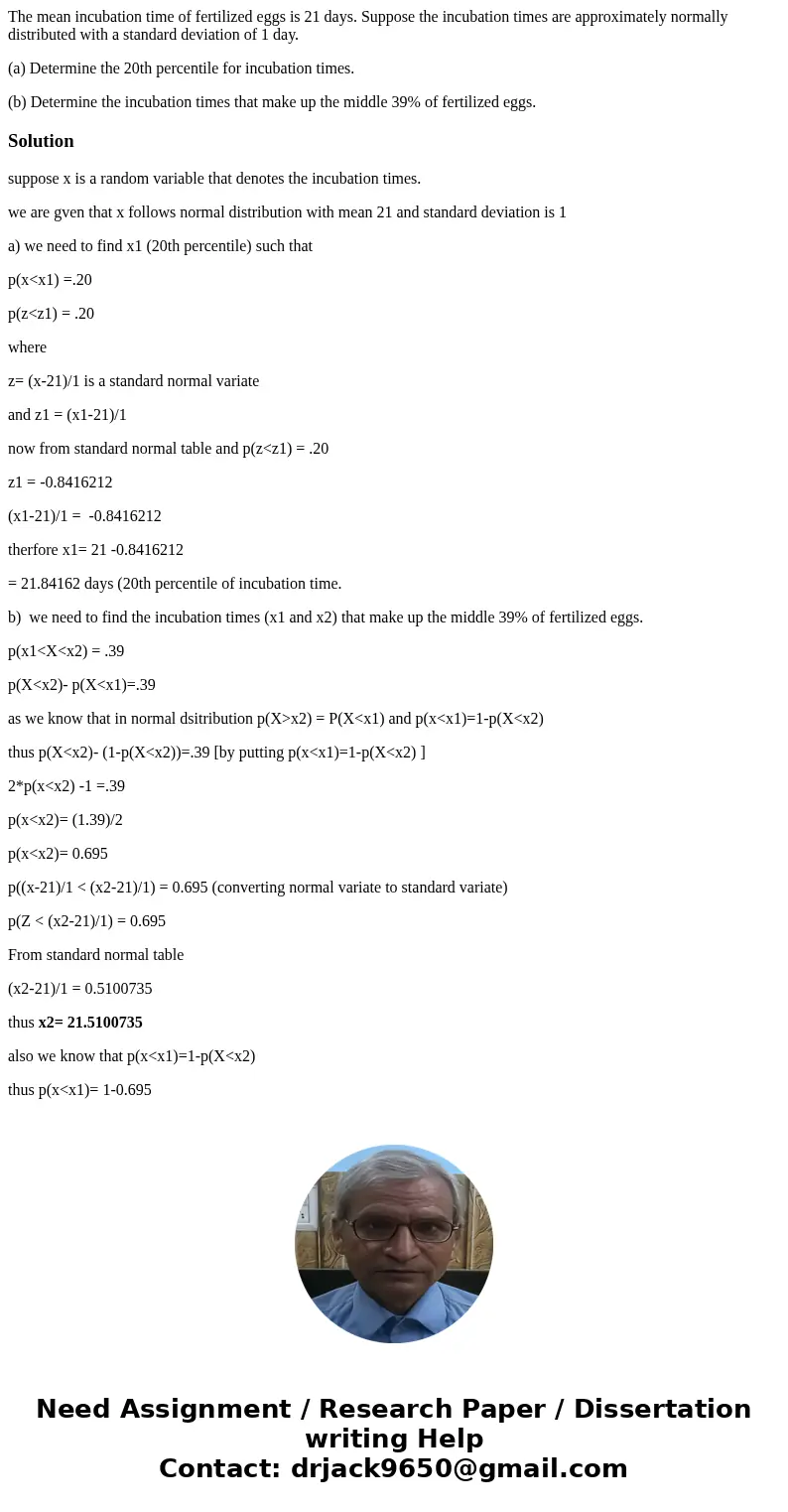The mean incubation time of fertilized eggs is 21 days Suppo
The mean incubation time of fertilized eggs is 21 days. Suppose the incubation times are approximately normally distributed with a standard deviation of 1 day.
(a) Determine the 20th percentile for incubation times.
(b) Determine the incubation times that make up the middle 39% of fertilized eggs.
Solution
suppose x is a random variable that denotes the incubation times.
we are gven that x follows normal distribution with mean 21 and standard deviation is 1
a) we need to find x1 (20th percentile) such that
p(x<x1) =.20
p(z<z1) = .20
where
z= (x-21)/1 is a standard normal variate
and z1 = (x1-21)/1
now from standard normal table and p(z<z1) = .20
z1 = -0.8416212
(x1-21)/1 = -0.8416212
therfore x1= 21 -0.8416212
= 21.84162 days (20th percentile of incubation time.
b) we need to find the incubation times (x1 and x2) that make up the middle 39% of fertilized eggs.
p(x1<X<x2) = .39
p(X<x2)- p(X<x1)=.39
as we know that in normal dsitribution p(X>x2) = P(X<x1) and p(x<x1)=1-p(X<x2)
thus p(X<x2)- (1-p(X<x2))=.39 [by putting p(x<x1)=1-p(X<x2) ]
2*p(x<x2) -1 =.39
p(x<x2)= (1.39)/2
p(x<x2)= 0.695
p((x-21)/1 < (x2-21)/1) = 0.695 (converting normal variate to standard variate)
p(Z < (x2-21)/1) = 0.695
From standard normal table
(x2-21)/1 = 0.5100735
thus x2= 21.5100735
also we know that p(x<x1)=1-p(X<x2)
thus p(x<x1)= 1-0.695
p(X<x1)= 0.305
p((X-21)/1 < (x1-21)/1) = 0.305
(x1-21)/1 = -0.5100735 (from normal standard table)
x1= 21-0.5100735
x1=20.48993
thus 39% egs can be fertilized iff incubation time lies between 20.48993 and 21.51007

 Homework Sourse
Homework Sourse